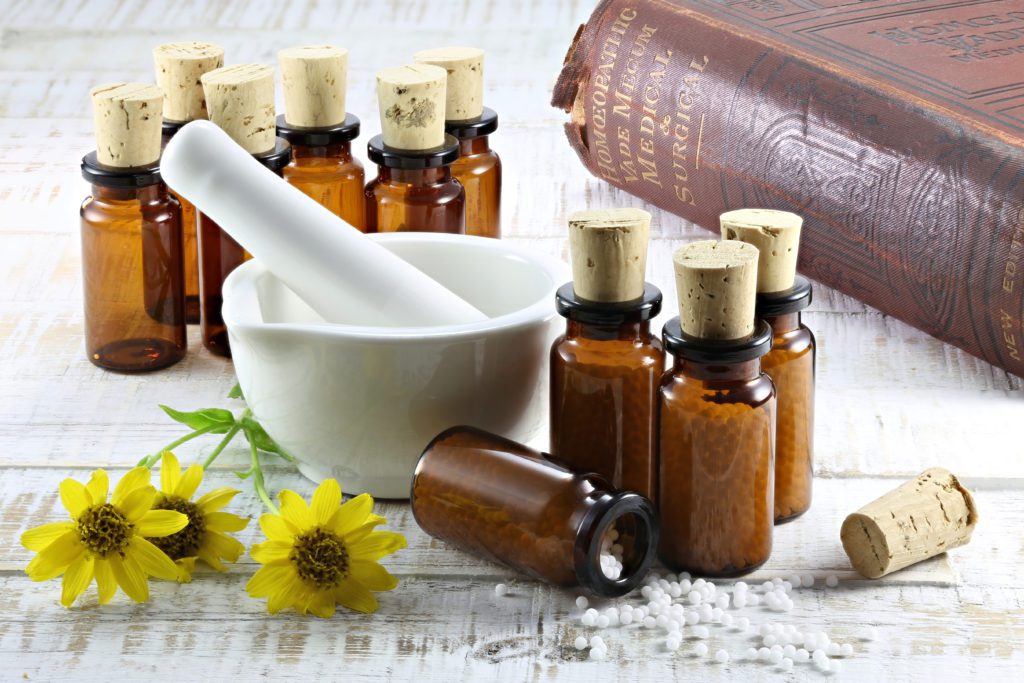What You Need to Know About Herbs and Homeopathy
There is often confusion about herbs and homeopathy, and many people think they are the same thing. In this post we give a clear explanation about the differences between these healing methods.
Many people are familiar with herbs through the Internet and various media as “medicine,” or having health improvement effects. Typical uses are St. John’s Wort for depression, Astragalus for the immune system, Hawthorn Berries for the heart, Milk Thistle for the liver, etc. We shall go a little more in depth on the functions of herbs, but first let’s describe why homeopathic remedies are different.
The Dilution Solution
Herbs are extracted in several mediums, the most common being water, which are teas, and alcohol, which are known as tinctures. A homeopathic remedy is made by taking an alcohol extract of an herb (in this example) and diluting it down significantly. How much dilution are we talking about here? A typical homeopathic remedy involves taking one drop of a herbal tincture and combining it with nine drops of water. This is called a 1X dilution. If we were to take one drop of the 1X dilution and combine it with nine more drops of water, it would be a 2X remedy. If we took one drop of the 2X and added nine drops of water you’d have 3X. The “X” as you’ve probably figured out means dilution by ten each step. This process can be carried out indefinitely, until one reaches one hundred, and then the dilutions are designated by the letter ‘C,” the Roman numeral that stands for one hundred. After about twenty-five “X” dilutions, there is in theory not one molecule of the original medicinal substance left.
This is the question about homeopathy that most people have: how does a remedy with no discernible chemical in it affect the body? Homeopaths would say the original medicinal substance (in our example an herb) has a subtle influence or life force that is the mechanism for healing. This one of the reasons that homeopathy is considered a form of energy healing. Homeopathic dilutions can go into the thousands, which seems to contradict both logic and science, but practitioners and patients who use homeopathy have claimed excellent results for this system of healing. Homeopathy has been around since around 1800, and came to America from Germany in the 1840s.
Like Cures Like vs. The Theory of Opposites
There is one other facet of homeopathy that is significantly different than herbal healing. Herbalists have for thousands of years used a balancing act to heal the body or restore health. What is meant by this is that if a person is weak they must be strengthened, if they are overburdened (think toxic buildup) they must be cleansed, if there is a blockage in the body, it must be removed. The Roman doctor Galen (129-210) described this as a system of opposites in which diseases and conditions were classified as hot or cold, wet or dry, strong or weak, full or empty. Herbs, diet, and other measures were applied to oppose the condition in the patient’s body and restore the natural balance.
The founder of homeopathy, Samuel Hahnemann (1755-1843), came to the conclusion that substances like herbs and minerals that could create symptoms in a patients body, could also be used to treat the body. As an example, someone who was exposed to poison ivy, could be treated with a dose of poison ivy plant in a homeopathic dilution. Even today, poison ivy (Rhus toxicodendron) is used by homeopathic practitioners for such symptoms as itching, rashes, blisters, and hives. The principle of how this works is called “like cures like.” This is in direct contrast the old school of herbalism that subscribed to the theory of opposites. Homeopaths have been building their repertoire of remedies (also known as the materia medica) for over two hundred years.
Practice Makes Perfect…Sometimes
Herbs on the other hand have been used by humans since the beginning of recorded history as food and medicine. When you take an herbal tea, dropper of tincture, or a couple of herbal capsules, you are ingesting possibly millions of molecules of dozens, if not hundreds of chemical constituents. Herbs, like food, are made of gross chemical substances that integrate into the body to make tissues, much as eating carrots or bilberry jam helps build eye function. Some herbs have the additional properties of detoxification and regulation (mostly through the nervous system) besides the often-touted uses as food for organs and tissues. Homeopathic remedies may have some properties of detoxification and regulation, but do not have food-like qualities that sustain organs and tissues.
A common example of the differences between herbs and homeopathy is the use of Arnica (Arnica montana) for healing bruises and trauma. Many consumers purchase a homeopathic ointment in health food stores labeled Arnica that is a 3X dilution. Based on the “X” dilution scenario outlined above, one would suspect there is very little actual arnica herb in this homeopathic remedy. To be fair, many people find this remedy useful and effective.
Herbalists would use a full-strength arnica tincture or cloth soaked with tea (a fomentation) applied topically to the injured area, and find it works rapidly and with better results than the arnica 3X remedy. Traditionally, herbalists have used strong herbal tinctures diluted with water, but not as diluted as the homeopathic system.
Herbs and Homeopathy – In Conclusion
If you would like to read another take on the difference between herbal healing and homeopathy, you can check out this article: What’s the difference between homeopathy and herbalism by our friends at Herb Pharm.

